The Crusader packs tend to come with four gladiators per pack-- so I actually wound up with quite a few gladiators! I didn't want to paint them all, so I just grabbed one of several of the primary fighting sytles:
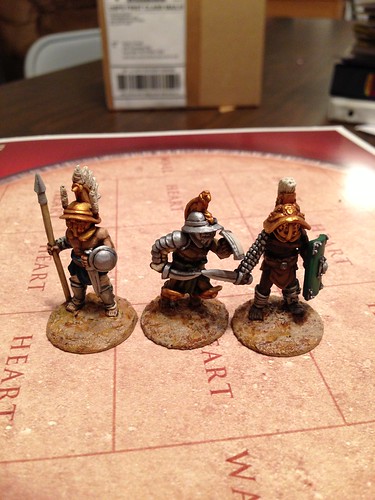
Hoplomachus, Thraex, and Murmillo-- believed to be stylized versions of the fighting styles of the Greek Hoplite, the Thracians, and possibly Gauls or even the Roman legionary.
The Secutor and the iconic Retiarius-- two later styles without apparent historical precedent, but a very popular match up.
Men killing men gets old after a while-- let's mix it up with some cinematically oversized bears and hyenas!
When I started reading about gladiators, I had no idea that the fighting style were formalized. It wasn't just two scrappers thrown into a pit with sharp objects. The Retiarius, for example, was a fighting style, a martial art in and of itself. The Retiarius trained in that specific style. And when he fought, it was usually against someone trained and fighting in the Secutor style. It reminds one of sports positions!
I also have four of the well-known sets of gladiator rules-- the unfortunately out of print Warhammer Historical's Gladiator; Two Hour Wargames' Red Sun, Blue Sky; Flagship Games' Habet, Hoc Habet; and Morituri te Salutant.
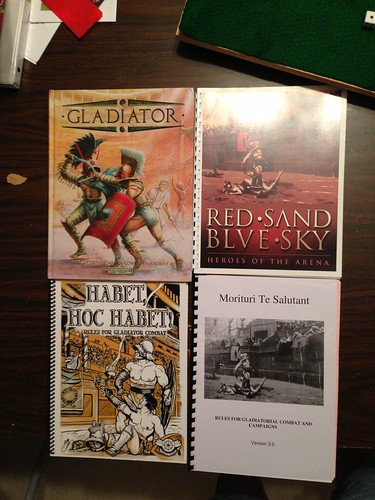
Number One Son and I sat down with Red Sand, Blue Sky. My feelings about these rules-- as with most Two Hour Wargames-- are mixed. On the one hand, they are generally good, fun, and often innovative games. On the other hand, the presentation is distinctly unprofessional. I'm not complaining about layout or lack of color; I mean, the organization of the rules is terrible. I was able to read and play a game of RSBS without too much difficulty, although Number One Son and I scratched our heads about how we could have used beasts in the arena. There are rules for customizing the beasts' stats, but there are no stats to start with. It appears they were left out, and are available in the errata on the 2HW Yahoo group. Things get missed, and this specific (albeit major) oversight is just symptomatic of a pattern with 2HW that goes back many, many years. Given their reasonable success, I don't understand why 2HW hasn't hired a professional editor or at least found a cadre of capable fans to proof read their rules. Anyway, at this point, the pattern is very clear, so at least I knew what I was buying.
Number One Son took a Retiarius, while I ran a Secutor using the programmatic rules. Ideal for solo play, take note! We rolled some customization-- while the Secutor was bog standard, while the Retiarius was of a slight build (-1 Strength), but had a Second Wind (recovering not the usual one but two bonus dice, which serve as stamina, when he rested).
The Secutor came out hard and fast, engaging the Retiarius in the middle of the area with aggressive attacks, and giving the Retiarius a minor cut to his head and belly. The Retiarius replied, trying to entangle the Secutor, but was unable to find an opening. Both watched each other in the middle of the arena, recovering their breath, while the Retiarius looked for an opening. The crowd (me) started to boo the lull in the action! Eventually, the Retiarius made a big move and entangled the Secutor, taking him to the sand. Before he could recover, the Retiarius plunged his trident deep in his upper left leg-- a potentially mortal wound!
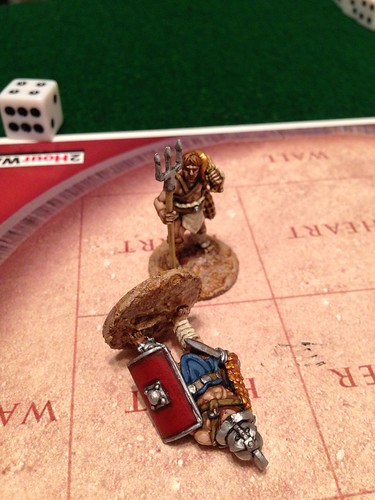
Given that the match was taking place in the fringes of the Roman Empire, in Numidia, the match was not to the death, and I decided the Secutor would surrender. Things looked bleak-- he was Bleeding, so he would lose a Bonus Dice (Stamina) every turn. He was currently Spent (no Bonus Dice), which meant that even resting, at best he could just keep himself from getting any worse. However, any action would cause him to continue to take damage. The Retiarius, though, could recover Bonus Dice and eventually spend them on stronger attacks. Had this been to the death, the Secutor would have been in bad shape indeed!
We both enjoyed the rules. They're simple, but not too simple. The area is broken up into regions-- wall areas on the inside, the heart areas within them, and the center area in, well, the center, the area of prime visibility. If both gladiators are in the same area, they make a Maneuver test to see who will gain the advantage to attack. This is a little different than most war games, but I didn't have a problem with it.
I had a few criticisms. Primarily, the gladiators in heavier armor didn't suffer endurance penalties for it, which some people think was an important consideration. Also, there is a mishmash of mechanics-- single die roll with bonus to determine move order, buckets of dice for maneuver and combat, and the usual 2HW two dice REP test for other situations. Despite its inelegance, though, it worked well enough. The Non-Player Gladiator (automated opponent) rules were pretty generic and didn't differentiate between gladiator styles.
But, all in all, we enjoyed it. There's obviously a lot of room for very detailed combat here. I prefer some simplicity, and felt these gave just about the right amount of complexity. We'll play a few more times, then start trying some of the other rules. The WH Gladiator book is gorgeous, worth the price just for the pictures alone. Plus, it has a lot more period detail...I imagine it will be next up.
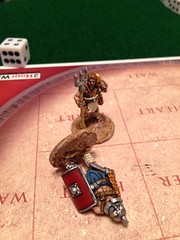
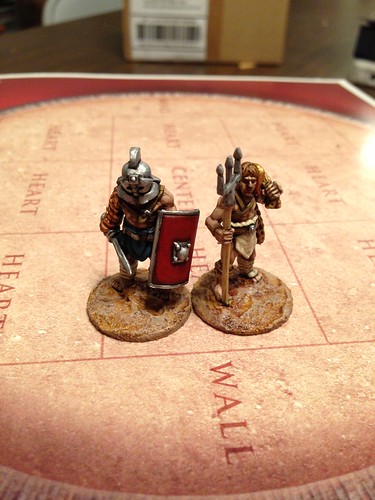
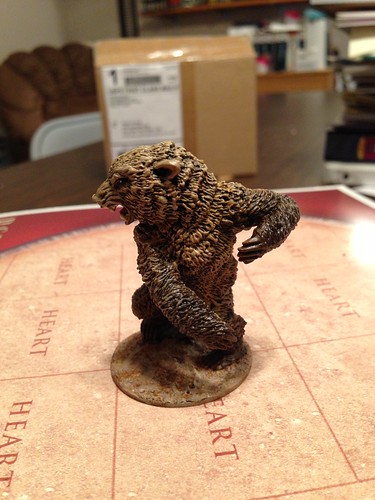
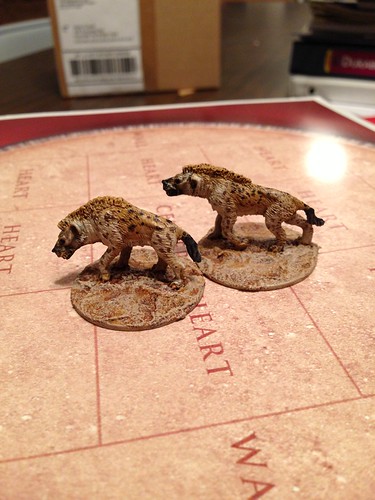
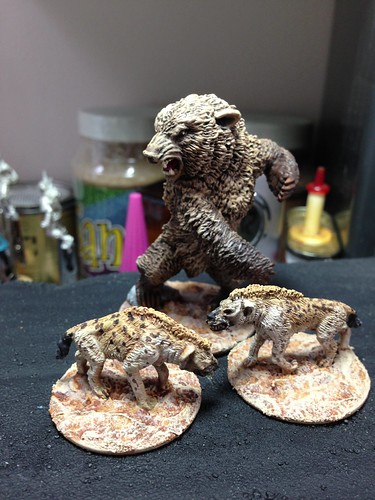


I agree with you about the 2HW rules organization. While the rules tend to be pretty streamlined, trying to read them is wicked confusing! They probably should have a better drafting and proofing process.
ReplyDeleteYes! I have played, for example, Chain Reaction at cons and had a lot of fun, but then get back home with the rules and find it incredibly frustrating.
DeleteI have WH Glad book, in fact a mate wrote them but he would not play them as he had got fed up from playtesting them.
ReplyDeleteHe has a lot of historic detail and most of it is historically correct
Ian
I haven't given it a thorough read yet, but it looks to be chock full of goodness. I am a happy owner-- buy your mate a pint for me!!
DeleteGreat looking minis and a real treat to be able to game with #1 Son.
ReplyDeleteI played one of the early versions of Red Sand, Blue Sky and we had a lot of fun with it. It gave you options for different ways to fight without bogging down in minutia.
It is too bad that THW has never taken that step toward more professional presentation sicne Ed always has some great ideas in his rules. THW rules remind me of early Two fat Lardies stuff in that regard, but the TFL guys have taken that step up in terms of presentation, editing, etc.